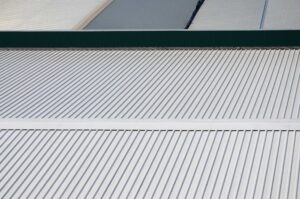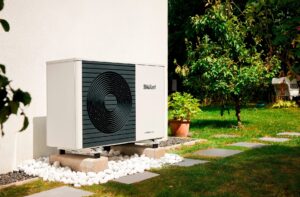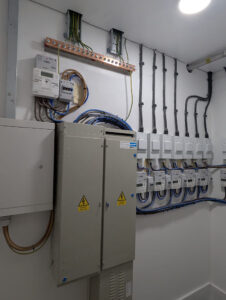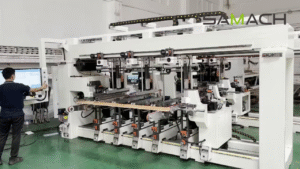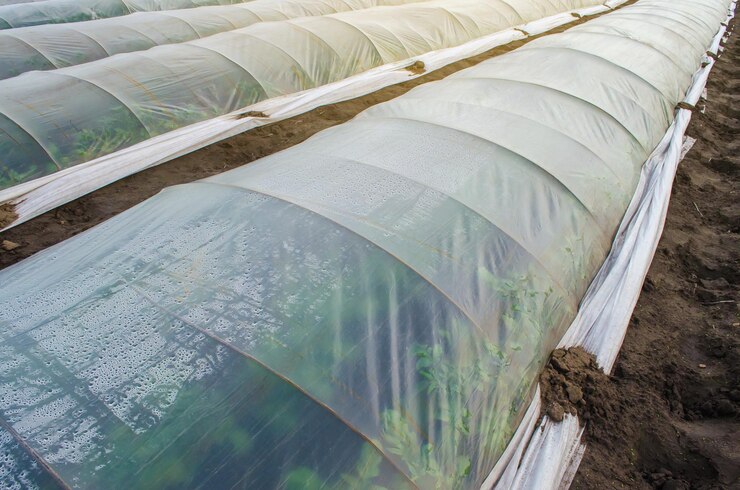
Polyethylene Film Greenhouse
Greenhouses have long been essential for farmers, gardeners, and commercial growers alike. They provide a controlled environment that extends growing seasons and protects plants from adverse weather. One of the most crucial elements of any greenhouse is its covering. Among the many options available, polyethylene film greenhouse structures has emerged as a favorite, thanks to its affordability, durability, and versatility.
In this article, we’ll explore why polyethylene film stands out, how it compares to other materials, and what you need to know to make the most of it for your greenhouse project.
What Is Polyethylene Film?
Polyethylene film is a lightweight plastic sheeting, typically made from low-density polyethylene (LDPE) or linear low-density polyethylene (LLDPE). This material is commonly used in agriculture for various purposes, but its role as a greenhouse cover material is perhaps its most impactful application.
Available in different thicknesses, usually between 4 to 8 mil (0.1 to 0.2 mm), polyethylene film is engineered to provide excellent light transmission while offering robust protection against environmental stressors.
Benefits of Using Polyethylene Film Greenhouse Structures
Choosing the right cover can make or break the success of your greenhouse. Here’s why polyethylene film deserves serious consideration:
Cost-Effectiveness
Compared to glass or polycarbonate panels, polyethylene film is remarkably affordable. It provides a high-quality barrier at a fraction of the cost, making it ideal for both small backyard setups and large commercial greenhouses. Whether you’re covering a simple hoop house or a complex structure, the cost savings are significant.
Excellent Light Transmission
Plants need ample light to thrive, and polyethylene film delivers. Most high-quality greenhouse films transmit up to 90% of visible light, closely mimicking natural sunlight conditions. Some versions are treated with UV stabilizers to prolong their life while maintaining high clarity, ensuring your plants get the light they need throughout the year.
Flexibility and Ease of Installation
One of the key advantages of polyethylene film is its flexibility. It easily conforms to different greenhouse shapes and sizes, whether you’re using an A-frame, hoop house, or gothic arch design. Installation is straightforward, and because the material is lightweight, you don’t need specialized equipment or a large team to get the job done.
Durability and Resistance
Modern polyethylene films are engineered to withstand harsh weather conditions. Many options include additives that make them resistant to UV rays, tearing, and punctures. With proper care, a good-quality film can last anywhere from three to five years before needing replacement.
Polyethylene Film vs Other Greenhouse Cover Materials
To understand why polyethylene film is so popular, it’s helpful to compare it with other greenhouse cover materials:
| Material | Cost | Light Transmission | Durability | Ease of Installation |
|---|---|---|---|---|
| Polyethylene Film | Low | High (80-90%) | 3-5 years | Very Easy |
| Glass | High | Excellent (90-95%) | 20+ years | Difficult |
| Polycarbonate Panels | Medium-High | Good (80-85%) | 10-15 years | Moderate |
| Fiberglass Panels | Medium | Good (75-85%) | 10-15 years | Moderate |
While glass remains the gold standard for aesthetics and longevity, polyethylene film offers unbeatable value, especially for growers who prioritize functionality and cost savings.
Using Polyethylene Film as Frost Cover for Plants
In addition to its role as a greenhouse cover material, polyethylene film excels as a frost cover for plants. Frost can devastate crops overnight, but a simple layer of polyethylene film can make all the difference. It traps heat from the soil and air, creating a microclimate that keeps temperatures around your plants just above freezing.
For this application:
-
Single-layer film works well for temporary frost protection.
-
Double-layer setups with an air gap between films provide superior insulation.
Whether you’re protecting delicate seedlings or hardy winter vegetables, polyethylene film offers a flexible, reliable solution.
Best Practices for Using Polyethylene Film
To get the most out of your polyethylene film greenhouse use, consider these expert tips:
Choose the Right Thickness
-
4 mil (0.1 mm): Suitable for short-term use or single-season greenhouses.
-
6 mil (0.15 mm): The most common choice, balancing durability with light transmission.
-
8 mil (0.2 mm): Ideal for high-wind areas or multi-year use.
Install Properly
Tension is key. A film that’s too loose will flap in the wind, increasing wear and tear. Conversely, overstretching can weaken the material. Use wiggle wire and lock channels for a secure, adjustable fit.
Maintain Regularly
Inspect your film regularly for tears or holes, especially after storms. Small punctures can be patched with repair tape, extending the life of your cover. Also, keep the film clean to ensure maximum light penetration.
Consider Double-Layer Systems
For colder climates, a double-layer system with an inflation fan creates an insulating air pocket, dramatically improving energy efficiency. This setup can reduce heating costs by up to 40% during the winter months.
Environmental Impact: A Growing Concern
A common question about polyethylene film is its environmental impact. While it’s true that polyethylene is a petroleum-based plastic, many manufacturers now offer recyclable options. Some films are designed for recycling at the end of their lifespan, reducing landfill waste. Additionally, the energy savings from using a greenhouse often outweigh the environmental cost of the plastic itself.
Final Thoughts
For anyone looking to build or upgrade a greenhouse, polyethylene film greenhouse structures offers a compelling mix of affordability, flexibility, and performance. Whether you’re a hobbyist gardener or a commercial grower, this greenhouse cover material can help you create the optimal environment for your plants to flourish.
Moreover, its dual role as a frost cover for plants adds to its versatility, making it an indispensable tool in any grower’s arsenal. By following best practices for installation and maintenance, you can maximize your investment and enjoy healthy, thriving plants year-round.
When it comes to greenhouse covering options, polyethylene film continues to prove why it’s a trusted choice for growers around the world.
